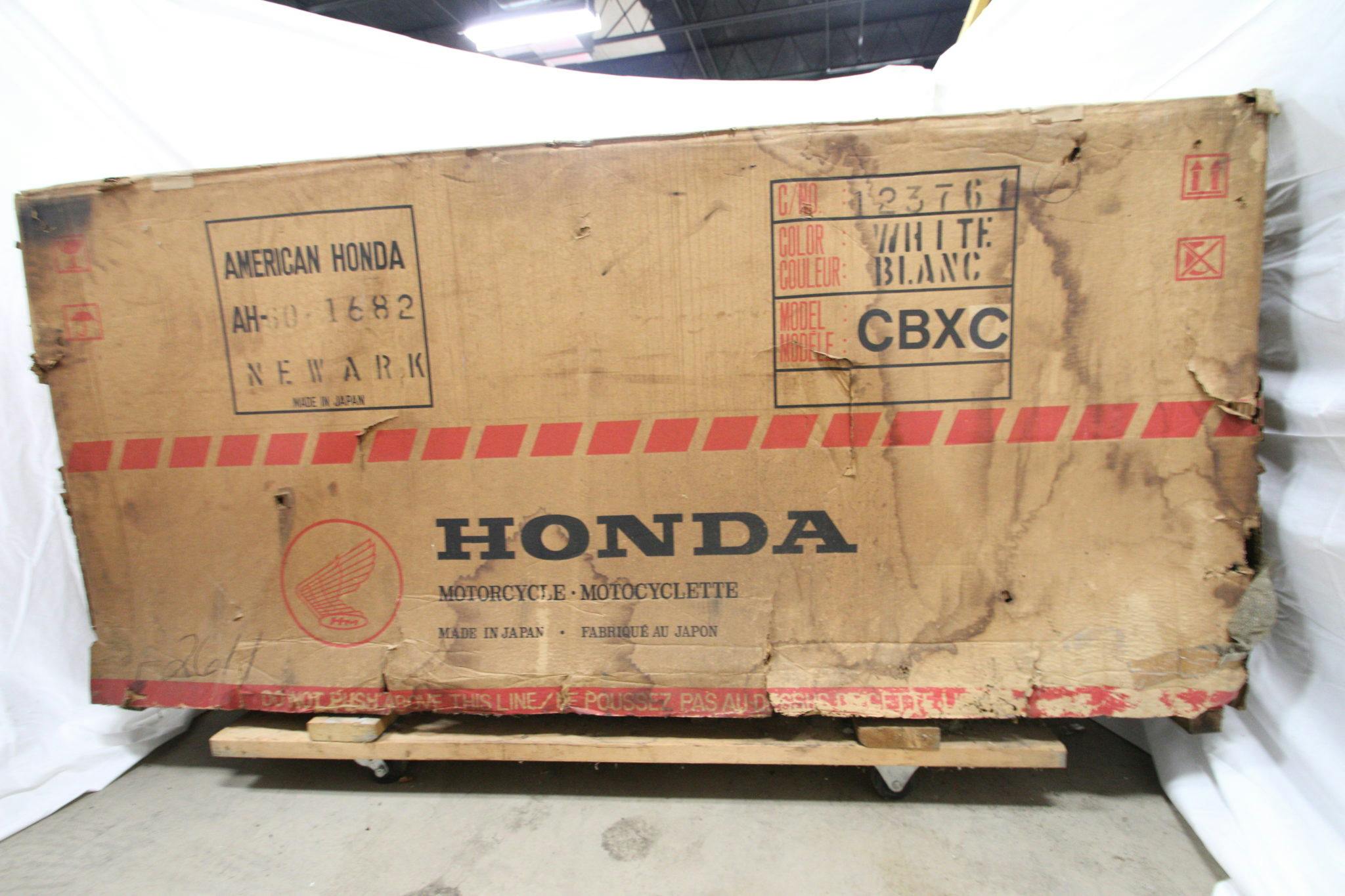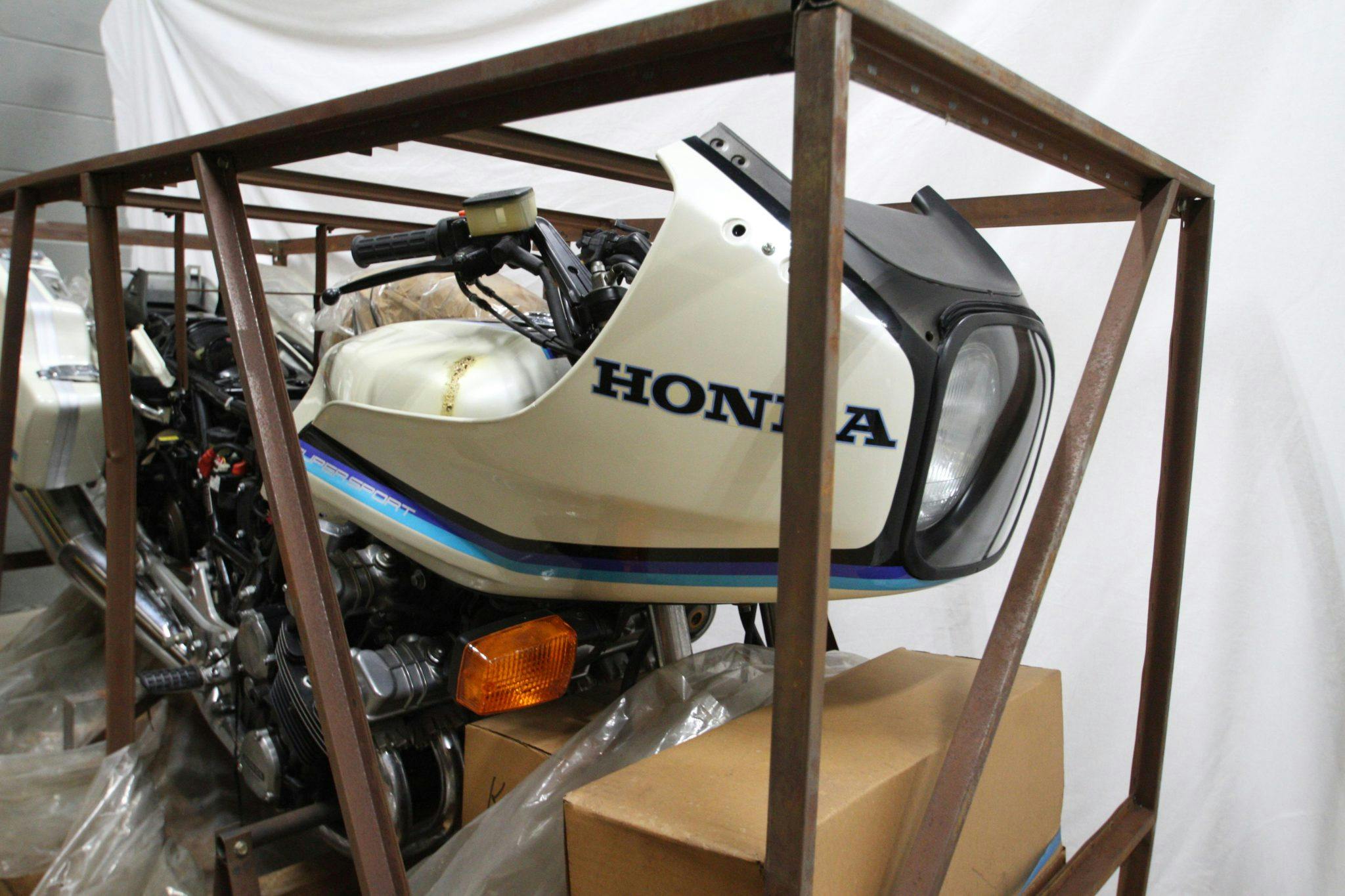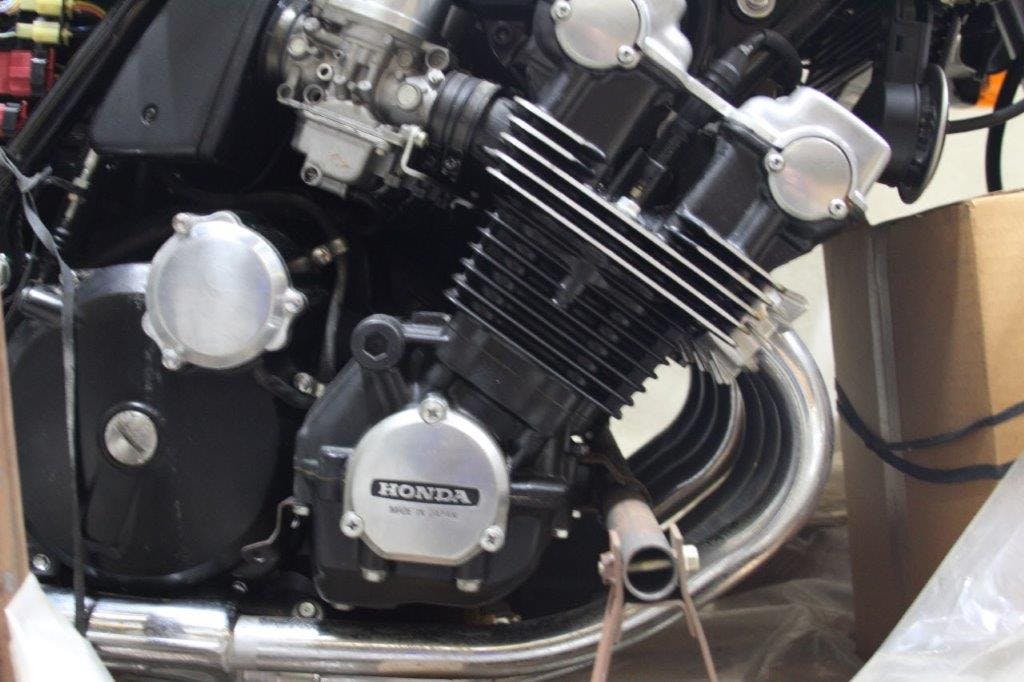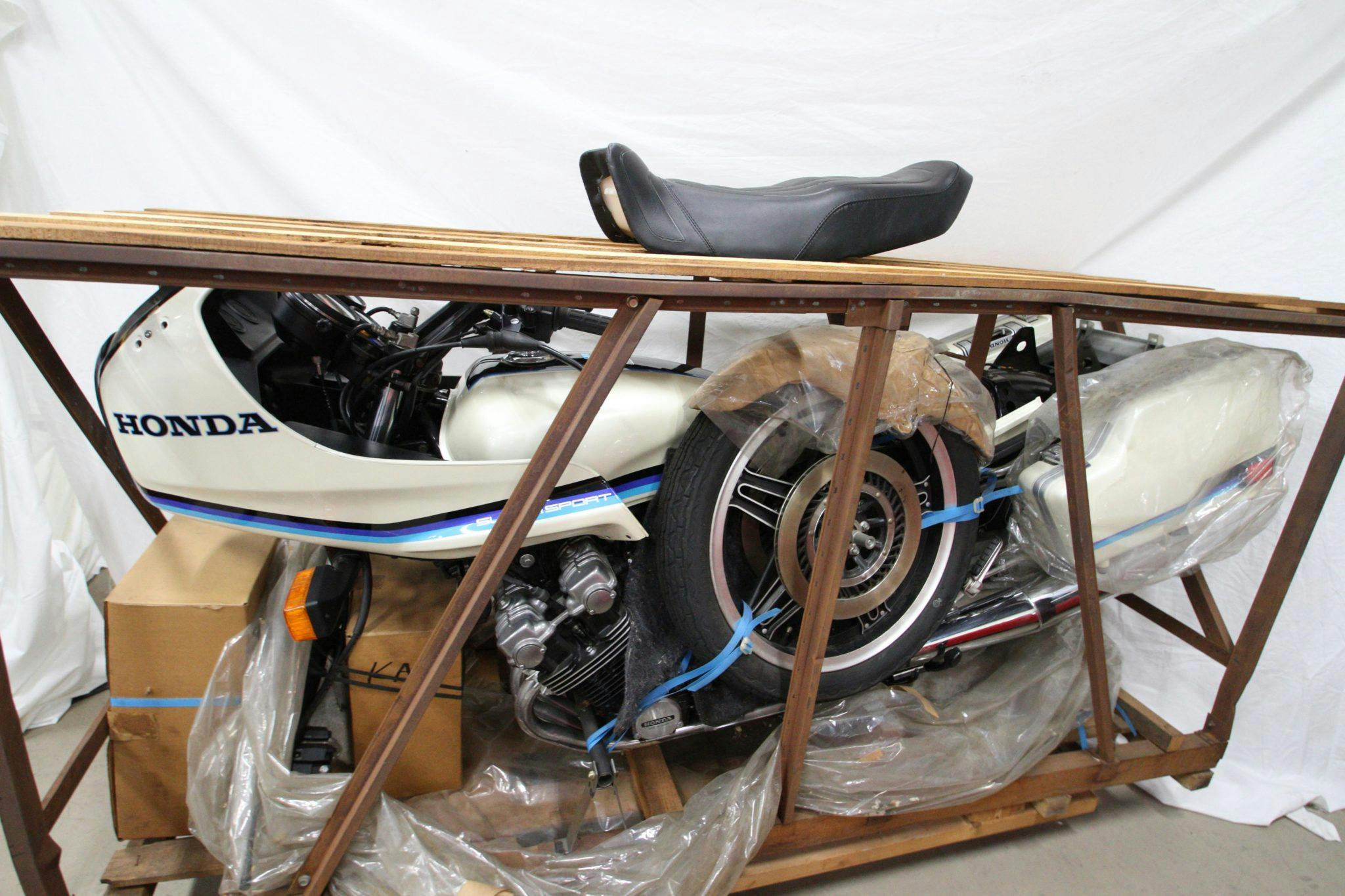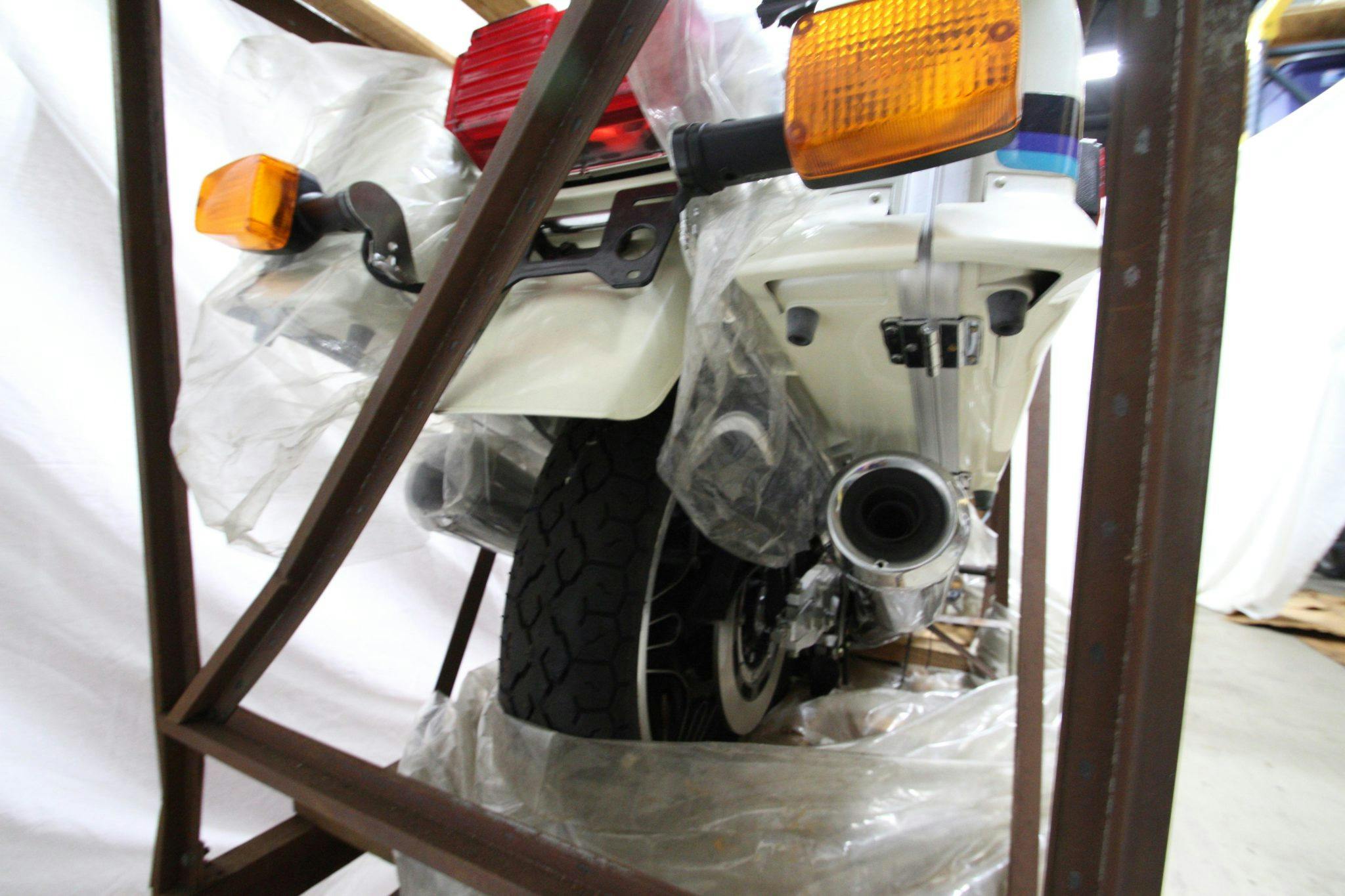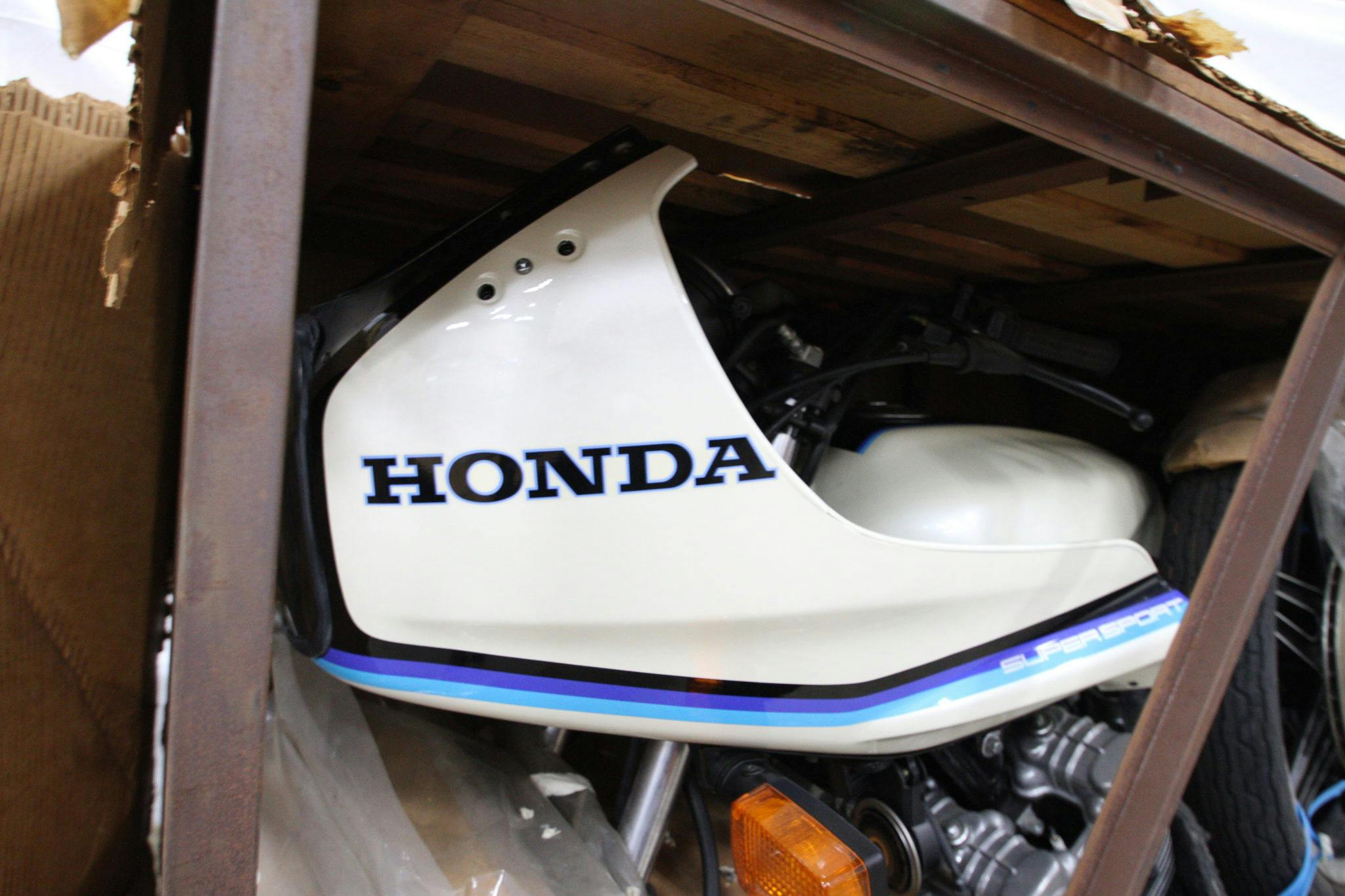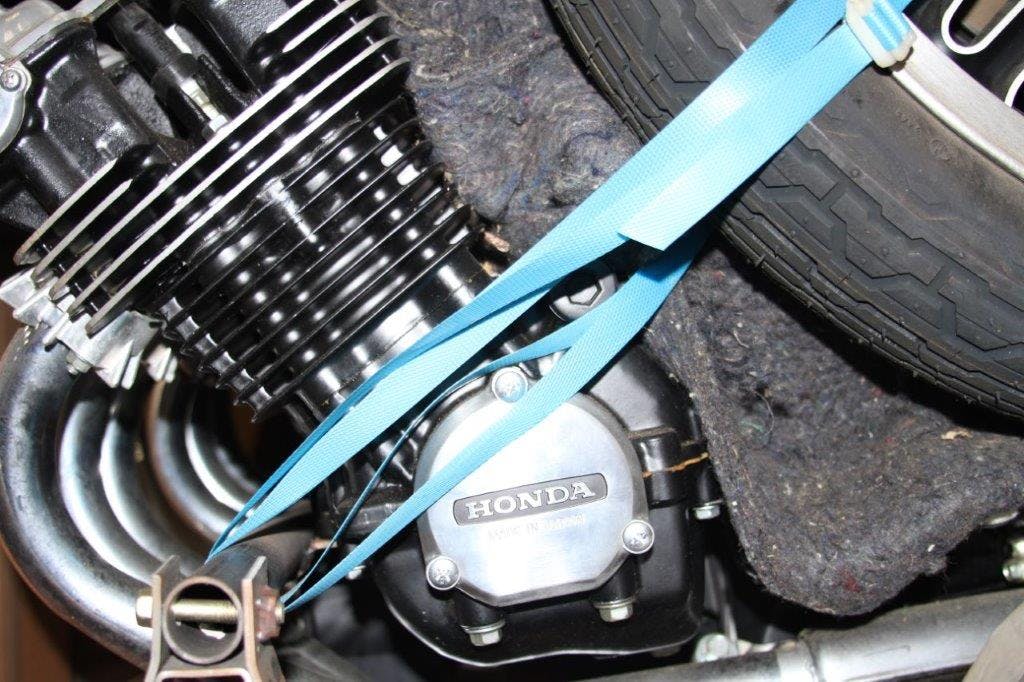Media | Articles
This factory-crated 1982 Honda CBX shows that originality is still king

Over the last couple of years, several new-in-crate motorcycles have popped up for sale and sold for big money. As bike values overall have been increasing, the crated values have followed, climbing exponentially. Maybe you think a storing away a motorcycle still in its original wrapper is a form collecting, or, perhaps, cruel abuse to an innocent bike. Either way, a bike still in its shipping crate is a time-capsule preservation of how the machine looked when it left the factory, even if the machine’s intended purpose—for a rider to enjoy it—was never fulfilled.
One of the most impressive motorcycles of the 1980s, this six-cylinder 1982 Honda CBX auctioned off via Bring a Trailer has been languishing in a crate for the last 38 years. It has not started since it left the factory, and it never moved beyond the original dealer which took delivery. The CBX was the bike that proved Honda could still push the envelope and keep up with the more radical designs of its Japanese rivals. For starters, a six-cylinder engine was not something most people thought would reach series production. Though sales of the bike were slow, its mere existence sent a clear message: Honda was willing to spend money, energy, and time to innovate and produce something special.
The final bid for this CBX came in at $21,500, totaling $22,575 including fees. For a CBX that isn’t in perfect, running condition this is huge money, but the draw is really the exclusivity—the “survivor” appeal of the crate. Go to any Vegas auction and you’ll find any number of super-clean CBXs, but a preserved example like this is, in the eyes of many collectors, worth a premium.
CBXs have been rising in value overall, and the first two years of production are worth more than the final two years. $10,000–$15,000 is becoming the norm for perfect examples. This bike is from the final year of the CBX’s four-year production run. It was listed by the original dealer and on the manufacturer certificate of origin. It seems like the dealer either had the forethought to mothball away a desirable bike, or for whatever reason simply couldn’t sell it when new. Don’t forget, a lot of today’s collectible motorcycles were unwanted when new—think Honda’s GB500 or CB450D.
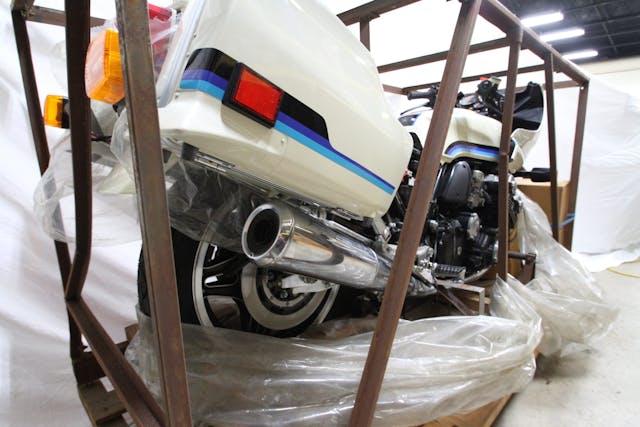
In 1981, Honda donated CBXs to schools in order to teach mechanic classes, and more than a couple of these bikes ended up sitting unopened in their crates when the schools found no use for them or eventually just forgot they were there. One such example of an ’81 CBX sold for $28,000 at an Obenauf auction in 2018, or about $8000 more than the #1-condition (Concours) value for that model. Six months later, the same bike sold on Bring a Trailer for $21,630, including buyer’s premium. The ’82 CBX that just closed on BaT is now the second crated CBX to be offered in the last year, and more and more big paydays for sellers will likely encourage owners to bring examples to market.
Marketplace
Buy and sell classics with confidence
It’s not just CBXs, though. New-in-crate Honda RC51s sport bikes have appeared for sale on eBay, and an auction last year in Michigan commanded big money for some crated bikes, including a 1999 Excelsior Henderson Super X.
At Mecum’s Las Vegas 2020 motorcycle auction there were five Bimotas, a Laverda SFC 1000, and a Moto Guzzi Le Mans 3. All very rare and valuable, all still in crates. At the same auction, a pair of crated Honda Z50RXs sold for $13,200, then sold on eBay a month later for $16,700, and sold again on eBay two months after that for $20,000. At the 2019 Mecum Vegas auction was one of the craziest new-in-crate sales to date (and possibly a world record for a mini bike) when a pair of Honda Z50RDG Christmas Specials changed hands for $51,150.
In addition to rare, carefully selected bikes, we have seen mid-2000s Kawasakis in their factory packaging sell for close to the price of a brand-new 2020 model. Early-2000s two-stroke motocross bikes in crates are selling for north of $10,000.
Seeing a bike new-in-crate, for many, adds to the aura and sense of historical occasion surrounding it. People chase originality as a key element of collectibility, and there’s a certain hierarchy for categorizing what’s most desirable. Whether it’s restored, an unrestored original with low mileage, or an unrestored original with zero mileage, an untouched gem still in its crate is as factory-fresh as a bike can be. Should such a preserved example be taken out of the crate? Put on display? Fired up and experienced as intended? The debate rages on, but the reality is that most of these bikes are destined to remain crated and never started. Either route would spoil the bike’s novelty, and that’s not even taking into account that starting a machine like this after so much time can result in damage. It’s safe to say that the market for rare, time-capsule bikes rising in value is very different than the market for running examples that are properly used.
Many dealers who shelved these bikes when new are coming around to selling them as rising values for elite-level examples draw more out of woodwork. Are dealers today doing the same thing with special new models like the Kawasaki H2R or Ducati Desmosedici? We’ll know for sure in 20 years or 30 years if the hot bikes of 2020 start showing up in crates.
